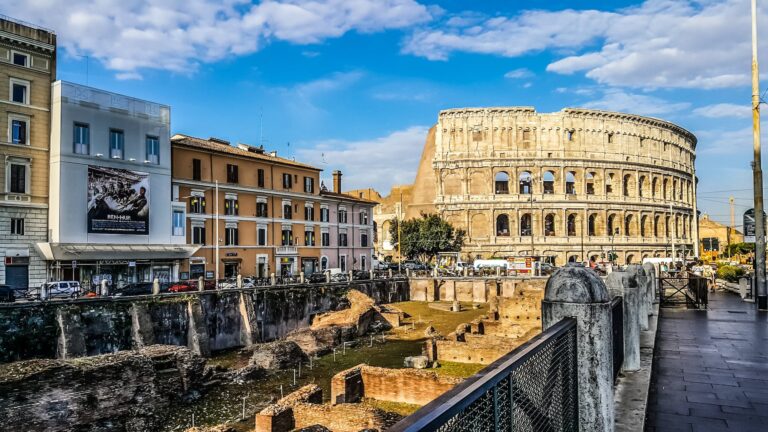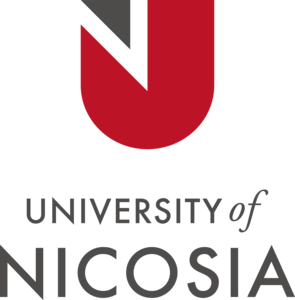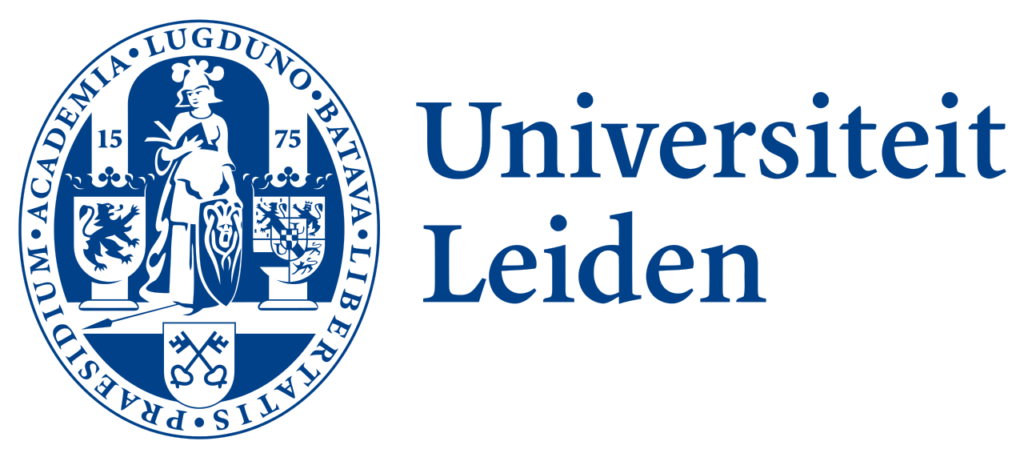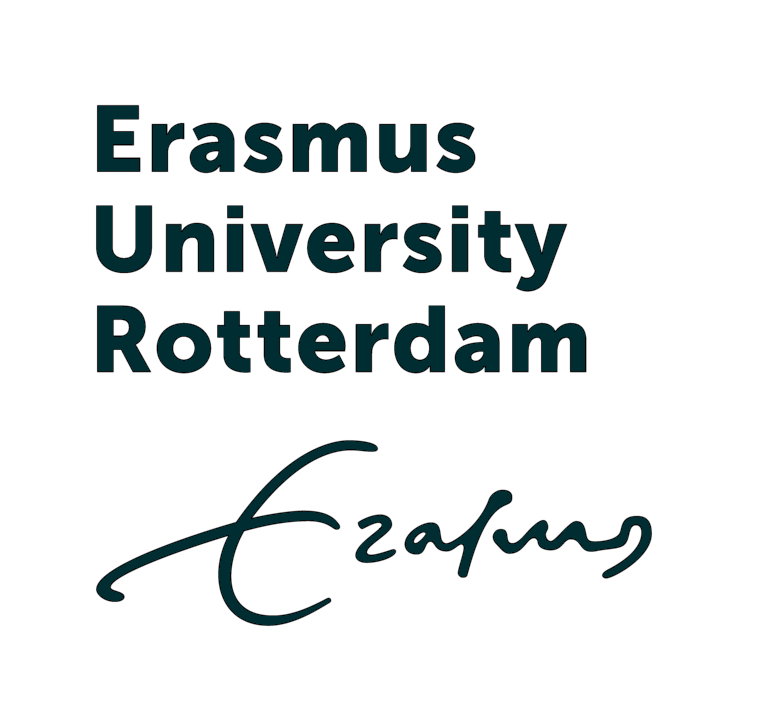Gap Year Programs in Europe
Your Guide to a Transformative Experience Abroad
Taking a gap year in Europe offers a unique chance for personal growth and learning opportunities unlike any other experience. The continent’s rich history, diverse culture, and multitude of languages provide a great opportunity for educational enhancement, skill development, and cultural immersion. As students and young adults contemplate stepping away from the academic treadmill, a European gap year presents plenty of structured programs that cater to various interests, from language learning and internships to volunteer work and adventure travel.

Each European country brings its own set of adventures and learning experiences to the table. Whether you choose to explore the ancient ruins in Greece, embrace the culinary delights of Italy, or intern in the bustling economic hubs of Germany or France, a European gap year promises to expand horizons in ways that traditional classroom environments often cannot. Careful planning and a clear understanding of one’s goals are vital to crafting a gap year that is both enriching and enjoyable.
Key Takeaways
- A European gap year provides educational and personal growth opportunities through diverse programs.
- Immersing in different cultures and languages can enhance career prospects and global understanding.
- Successful gap years are the result of thoughtful planning and aligning activities with personal objectives.
Understanding Gap Years
A gap year is a strategic pause in formal education or a career path to pursue personal growth and experiences that contribute to one’s global perspective and self-awareness.
Definition and Purpose
A gap year is a period, typically an academic year, taken by a student as a break between secondary education and higher education or between higher education and professional career. The purpose of such a break is multi-faceted, aiming to give individuals time to gain new experiences, often through various gap year programs which might include travel, volunteer work, or internships. These programs are designed to challenge participants, pushing them out of their comfort zones and enabling personal development.
Popularity and Trends in Europe
In Europe, gap years have become a cultural norm, with a noticeable trend of young people choosing to embark on such journeys. Statistically, Europeans are more likely to take a gap year than their counterparts in the US. The growing popularity can be attributed to a societal emphasis on the importance of gaining a global perspective and practical experience before settling into higher education or a career. Gap year programs in this region are diverse, offering a range of experiences from language immersion to internship opportunities across various fields.
- Key Trends:
- Increased offerings of structured gap year programs.
- Growing emphasis on international experiences as a means of gaining global skills.
- A tendency to regard gap years as a rite of passage among European youth.
Planning Your European Gap Year
When thinking about a gap year in Europe, you should focus on the specifics of timing, budget, and a well-thought-out itinerary to make sure you have a fulfilling experience.
When to Start
You should begin planning at least six months to a year in advance. This allows enough time to research destinations, book flights at better rates, and arrange accommodation. You should also pay attention to the peak and off-peak travel seasons of their chosen countries to balance the cost and experience.
Budgeting
Creating a detailed budget is essential. You should consider the cost of living in various European cities, potential travel insurance costs, and plan for unexpected expenses. For example, Eastern Europe often has a lower cost of living compared to Western Europe, which can influence budget allocation.
- Estimated Daily Budget:
- Western Europe: $70 – $150
- Eastern Europe: $40 – $80
Creating an Itinerary
A well-planned itinerary balances major city highlights with off-the-beaten-path experiences. It’s always smart to include safety considerations and time for rest. You should consider the distance and time between destinations and the availability of transportation options such as trains or budget airlines.
| Country | Duration | Key Activities | Approx. Cost (USD) |
|---|---|---|---|
| France | 1 week | Cultural tours, language classes | 700-1400 |
| Spain | 1 week | Volunteering, beach visits | 500-1000 |
| Germany | 1 week | Historical sites, festivals | 600-1200 |
By planning early, budgeting wisely, and creating a detailed itinerary, travelers can ensure their European gap year is rewarding and unforgettable.

European Gap Year Programs
- Projects Abroad: Offers diverse gap year programs including volunteering, internships, language courses, and cultural immersion across Europe.
- The Leap: Offers volunteer opportunities, conservation projects, and community work across various European countries.
- Think Global School: Provides international travel and cultural immersion experiences in multiple European countries.
- Adventure Travel Program by ARCC: Focuses on adventure-based programs with outdoor activities and cultural experiences in Europe.
- Loop Abroad: Offers programs in veterinary, conservation, and cultural immersion across Europe, particularly in wildlife and animal care.
- InterExchange: Provides various gap year opportunities such as au pair programs, language courses, and internships across multiple European countries.
- Gapforce: Offers gap year programs combining adventure, travel, and volunteering across Europe.
- Frontier: Specializes in conservation and environmental projects in various European countries.
- Global Leadership Adventures: Focuses on leadership development and community service programs in Europe.
- Raleigh International: Provides environmental and community projects for young people across Europe.
- GoEco: Offers a range of volunteer and internship programs focused on environmental and humanitarian projects in Europe.
These organizations often offer a variety of programs, so it’s essential to explore their websites, review program details, costs, and locations to find the best fit for your interests and goals during your gap year in Europe.
Europe offers an array of enriching gap year opportunities across various regions, each with its own unique cultural experiences, historical sites, and natural beauty.
Let’s go over each region real quick:
Western Europe Highlights
In France, gap year participants can immerse themselves in the language and romance of Parisian streets, or choose to explore the rural regions for a more tranquil experience. Meanwhile, the Swiss Alps provide ample chances for outdoor adventures set against breathtaking landscapes.
- France: City explorations, language learning, food scene
- Switzerland: Outdoor activities, alpine scenery
Central Europe Insights
Germany and the Czech Republic stand as beacons of Central Europe, offering a blend of modern amenities and rich history. The vibrant cultural scene of Berlin contrasts with the Gothic architecture of Prague, each city promising a distinct gap year encounter.
- Germany: Cultural diversity, historical sites
- Czech Republic: Architectural wonders, historical towns
FREE INSIDER’S GUIDE

Top 5 English-Taught Colleges in Europe
Kickstart you education abroad with a powerful degree taught entirely in English, all without taking on any student loans!
Southern Europe Attractions
Italy’s diverse regional cultures and Spain’s vibrant festivities represent the warmth of Southern Europe. In Italy, one can delve into the art and history in cities like Rome and Florence, or the gastronomic delights in Tuscany. Spain’s laid-back lifestyle and colorful traditions can profoundly impact any traveller.
- Italy: Artistic heritage, culinary experiences
- Spain: Festivals, relaxed social atmosphere
Northern Europe Discoveries
Nordic countries such as Iceland offer otherworldly landscapes from volcanic terrain to dramatic waterfalls. Ireland awaits with its welcoming spirit and plethora of working holiday visa opportunities, making it a favorable gap year destination for English speakers.
- Iceland: Natural wonders, unique ecosystems
- Ireland: Friendly communities, work opportunities
Eastern Europe Treasures
Gap year voyagers in the Eastern Europe region can uncover hidden gems like Greece, where ancient ruins meet azure seas. The blend of historical sophistication and the laid-back Mediterranean lifestyle creates an unforgettable experience for every visitor.
- Greece: Ancient sites, island hopping opportunities
Cultural Immersion and Learning

Gap year programs in Europe offer extensive opportunities for individuals to immerse themselves in new cultures and learn extensively through direct experience. These programs place a strong emphasis on language courses, art, and history, as well as local traditions.
Language Courses
Language is a gateway to understanding a culture, and Europe is rich with options for language enthusiasts looking to develop fluency. Language courses range from Spanish immersion programs in Spain to intensive French studies in France. They typically combine classroom learning with practical conversation practice. Often, these courses include staying with a local host family to provide a deep linguistic and cultural experience, as noted in the immersive language programs highlighted by Linguistic Horizons.
Art and History
Europe’s art and history are globally renowned, and gap year programs bring these subjects to life beyond the textbooks. Students may find themselves wandering the halls of the Louvre, sketching in the Roman Forum, or studying the impact of the Renaissance through firsthand exploration of Florence’s masterpieces. These programs emphasize active learning through visits to key historical sites and workshops in artistic techniques, helping students to grasp the significance of Europe’s art historical context.
Local Traditions
Local traditions are the fabric of a community’s unique culture, and engaging with them allows students to fully appreciate the diversity of European lifestyles. Culinary classes exploring local cuisine, traditional folk dancing, and participation in festivals grant a deeper connection with local customs and people. This engagement with local traditions is important for cultural immersion.
Educational Programs and Internships

Europe offers an array of educational programs and internships that cater to a variety of interests and career paths. These opportunities enable students to gain academic credit, practical experience, and cultural exposure.
Study Abroad Options
Europe’s study abroad programs combine rigorous academia with immersive cultural experiences. Students can choose from a range of courses that span across the humanities, sciences, and professional fields. For instance, through programs like CIEE Gap Year in Paris, learners have the chance to enhance their language skills and cultural understanding in a city renowned for its contributions to art and intellect. Programs often vary in length, offering flexibility to accommodate different schedules.
Internship Opportunities
Internships in Europe give students practical experience in their field of interest. An internship is typically a short-term work experience lasting a few weeks to a few months. Conversely, a traineeship often includes a structured learning programme. Organizations like The Intern Group provide a diverse selection of gap year internships across Europe, allowing participants to apply their theoretical knowledge in real-world settings. Whether it’s a legal internship program in Dublin through ELI Abroad or a micro-enterprise project in Greece, there are opportunities tailored to ambitious students eager to advance their careers before graduation.
Work and Volunteer Opportunities

Taking a gap year in Europe offers a spectrum of opportunities for individuals to gain hands-on work experience and make a direct impact through volunteering. These experiences not only contribute to personal growth but also foster a deeper understanding of diverse communities and environments.
Work Experience Abroad
Europe is a continent that offers a dynamic range of work opportunities for gap year participants. Those looking to enhance their resume can engage in jobs and internships across various industries — from creative arts in Berlin to business internships in Paris. Sectors such as hospitality, tourism, and teaching English as a foreign language are especially receptive to gap year workers.
- Working Holiday in the UK: A program that spans 4-24 months and provides a profound immersion into British culture.
- Study and Work Programs: Combine study with work experience, such as learning Spanish in Barcelona while working part-time.
Volunteering with Communities
Volunteering is a cornerstone of the gap year experience, allowing individuals to work with communities on meaningful projects that address social, educational, or environmental issues. Organizations like Oyster Worldwide facilitate these connections, offering programs where participants can assist in refugee aid projects or contribute to environmental conservation efforts.
- Community Support: Participants may volunteer in areas such as child care, education, and refugee support.
- Environmental Projects: Opportunities to work on conservation projects, helping to protect Europe’s diverse ecosystems.
Adventure and Leisure Activities
Europe’s gap year programs offer an enriching blend of adventure and local culture, providing unparalleled opportunities to explore iconic destinations, indulge in local cuisine, and engage in vibrant social events that foster lifelong friendships.
Outdoor Excursions
Europe presents a myriad of outdoor excursions, ranging from the Alpine hikes in countries like Switzerland to the sun-drenched beaches of the Mediterranean. Participants can immerse themselves in the natural landscape, whether they prefer the rush of white-water rafting or the tranquility of a scenic bike ride through the countryside.
Foodie Experiences
Culinary enthusiasts can explore Europe’s diverse food scene, which is as rich as its history. From savoring freshly-made pasta in Italy to indulging in authentic tapas in Spain, gap year travelers can enjoy hands-on cooking classes, local market tours, and even wine tastings that highlight the region’s gastronomic delights.
Nightlife and Events
The nightlife and event scene in European cities are second to none, offering a variety of experiences from high-energy dance clubs in Berlin to intimate jazz bars in Paris. Social events, such as local festivals and theatre shows, provide engaging ways to experience the destination’s culture, meet new people, and build friendships that could last a lifetime.
Living in Europe
When planning a gap year in Europe, one should carefully consider the practicalities of daily life. From finding a place to stay to navigating public transport, understanding these facets ensures a safer and more enjoyable experience.
Finding Accommodation
Prospective gap year students should expect accommodation to vary widely in price and quality across Europe. Capital cities typically have higher cost of living, which is reflected in accommodation costs. Shared apartments or student dorms offer a more budget-friendly option, whereas private rentals may offer more comfort but at a higher cost.
- Budget Accommodation: Hostels, Shared Apartments, University Dorms
- Standard Accommodation: Private Rentals, Mid-Range Hotels
- Luxury Accommodation: High-End Apartments, Boutique Hotels
Public Transportation
Public transport is generally reliable and can be an economical choice for students. Many cities offer monthly passes which reduce the budget impact. The Gap Year Programs in Europe often include advice on local transport options.
- Urban Transit: Metro, Trams, City Buses
- Regional Connectivity: Trains, Long-Distance Buses
- Discounts: Student Cards, Rail Passes
Healthcare and Safety
Europe is regarded as safe for travelers, but one must still take precautions and be aware of local healthcare services. The European Health Insurance Card (EHIC) is advisable for European citizens, while international students should secure comprehensive travel insurance. Websites like Gap Year World can provide additional information on healthcare options for gap year travelers.
- Health Insurance: EHIC for EU citizens, Private Insurance for Non-EU
- Pharmacies: Widely available for minor health issues
- Emergencies: Dialing the Europe-wide emergency number 112
Understanding these aspects of living in Europe—accommodation, transport, healthcare and safety—can significantly enhance one’s gap year experience by providing stability and peace of mind.
Preparation and Checklist
Preparing for a gap year in Europe requires careful planning and organization. Key factors such as travel logistics, legal documentation, and financial management must be meticulously considered to ensure a smooth experience.
Visas and Passports
Before embarking on a gap year, one must ensure their passport is valid for at least six months beyond the duration of their stay. For many European countries, a visa may not be required for stays under 90 days, but for longer trips or those involving work, a visa is crucial. It is advisable to check the entry requirements of each destination country well in advance.
- Essential Documents:
- Passport with 6+ months validity
- Appropriate visa(s)
- Photocopies of important documents
Packing Tips
Packing smart can make a tremendous difference in one’s gap year experience. A versatile and minimal wardrobe, suitable for various climates and social settings, is recommended. Don’t forget adapters for electronic devices and any necessary medications.
- Packing Essentials:
- Clothing for multiple seasons
- Electronics and adapters
- Personal toiletries and medications
Pre-Departure Orientation
Travelers should participate in a pre-departure orientation to familiarize themselves with cultural norms, safety protocols, and legal regulations of their destination countries. Understanding one’s itinerary and having a clear budget in place, as well as securing insurance, are critical steps.
- Orientation Checklist:
- Cultural norms and language basics
- Safety and legal guidelines
- Insurance and health care options
Each individual’s preparations will vary depending on their specific itinerary, but attention to these areas is key to a well-planned gap year in Europe.
Frequently Asked Questions
When considering a gap year in Europe, prospective travelers often have a number of inquiries ranging from choosing reputable organisations to understanding the impact of Brexit on travel plans. This section addresses those common questions with current and concise information.
What are the top-rated gap year organisations for programs in Europe?
Top-rated organisations offering gap year programs in Europe include Gapforce with its Europe Tour, CIEE for language and culture in France, and Youth for Understanding for study abroad in Germany.
What are the best destinations in Europe for a gap year experience?
Popular destinations for a gap year in Europe often include France, Spain, Italy, and Germany, known for their rich cultures, diverse cities, and educational opportunities.
How has Brexit affected the ability for non-EU citizens to participate in gap year programs in Europe?
Brexit has altered travel and work regulations, making it essential for non-EU citizens to check visa requirements and work permits for gap year opportunities in the UK. The conditions for participating in other European countries remain largely unaffected for non-EU citizens.
What are the most accepting European countries for students planning a study gap year?
Countries such as Germany, which offers a range of study abroad programs, and Spain, with its language immersion experiences, are notably welcoming to international students taking a study gap year.
What are the options for working in Europe during a gap year?
Gap year participants looking to work in Europe have opportunities ranging from internships, such as legal internships in Dublin, to teaching English as a foreign language and part-time jobs in the hospitality industry, subject to the visa regulations of the host country.
Are gap year programs in Europe beneficial, and how can their value be assessed?
The benefits of gap year programs in Europe are manifold, offering cultural immersion, language skills, and personal growth. The value can be assessed through the attainment of real-world skills and the development of international perspectives that participants gain.

















